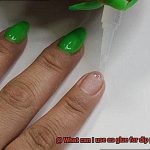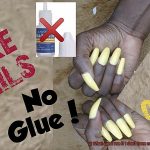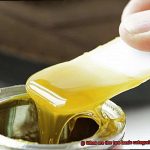We all know how this adhesive has become a lifesaver in our day-to-day activities, instantly bonding things together like magic. But have you ever wondered if there are any downsides to this seemingly perfect solution? Join us as we unravel the mysteries surrounding its limitations from both a casual and professional standpoint.
In this intriguing discussion, we’ll uncover some lesser-known facts about super glue – its inability to bond certain materials, durability issues under specific conditions, and potential health concerns. Whether you’re an amateur DIY enthusiast or a seasoned pro, understanding these limitations will empower you to make more informed choices when reaching for that trusty tube of super glue.
So grab your favorite cuppa joe and prepare to be amazed as we delve into the fascinating realm of super glue’s limitations. Get ready to expand your knowledge and gain a fresh perspective on this seemingly invincible adhesive. Let’s dive in together and explore the intriguing boundaries of super glue.
What is Super Glue?
Contents
- 1 What is Super Glue?
- 2 Limitations of Super Glue
- 2.1 Bonding with Certain Materials:
- 2.2 Lack of Flexibility:
- 2.3 Temperature and Moisture Sensitivity:
- 2.4 Inability to Fill Gaps or Spaces:
- 2.5 Limited Shelf Life:
- 2.6 Not Suitable for All Repairs:
- 2.7 Inability to Bond Certain Materials
- 2.8 Lack of Flexibility Once Cured
- 2.9 Temperature Sensitivity
- 2.10 Moisture Interference
- 2.11 Not Suitable for Heavy Loads or Constant Stress
- 3 Alternative Adhesives and Professional Advice
- 4 Cleaning and Preparing Surfaces Before Applying Super Glue
- 4.1 Step 1: Say Goodbye to Dirt and Debris:
- 4.2 Step 2: Banish Grease, Oil, and Moisture:
- 4.3 Step 3: Add Some Roughness for Extra Grip:
- 4.4 Step 4: Dry ‘Em Out:
- 4.5 Step 5: Special Attention for Tricky Materials:
- 4.6 Step 6: Watch Out for Plastic Pitfalls:
- 4.7 Step 7: Follow the Manufacturer’s Instructions:
- 5 Examples of Non-Porous Surfaces That Super Glue Works Best On
- 6 How to Test the Strength of a Super Glue Bond
- 7 Potential Hazards of Using Super Glue
- 8 Conclusion
Super glue, also known as cyanoacrylate adhesive, is renowned for its remarkable fast-drying and strong bonding properties. However, it’s important to be aware of its limitations to ensure optimal usage. In this article, we will explore the limitations of super glue, shedding light on scenarios where it may not be the ideal adhesive choice.
Ineffective Bonding on Certain Materials:
Super glue excels on non-porous surfaces like metal, glass, and plastic. Nevertheless, porous materials such as wood or fabric may not allow for a durable bond. The glue tends to seep into the material rather than creating a robust bond on the surface.
Lack of Flexibility:
Once super glue dries and hardens, it becomes rigid and brittle. This proves problematic when bonding materials that require flexibility or movement, like rubber or specific plastics. The inflexibility of the glue can lead to cracks or breaks under stress, weakening the bond.

Temperature Sensitivity:
Extreme temperatures can impact the performance of super glue. High temperatures can cause the glue to soften or melt, compromising its bonding strength. Conversely, low temperatures can make the glue brittle and reduce its adhesive properties. Considering temperature conditions where the glued object will be used or stored is crucial for ensuring a lasting bond.
Moisture Interference:
The presence of moisture or humidity can hinder the curing process of super glue. Water-based substances or damp surfaces prevent proper drying and bonding. It is paramount to ensure surfaces are clean and dry before applying super glue for optimal adhesion.
Unsuitable for Heavy Loads or Continuous Stress:
Super glue is not designed for heavy-duty applications involving substantial loads or constant stress. While it provides a strong bond for lightweight objects, it may not withstand pressure exerted by heavier items or continuous pulling or twisting forces. Exploring alternative adhesives or mechanical fasteners is recommended for such situations.
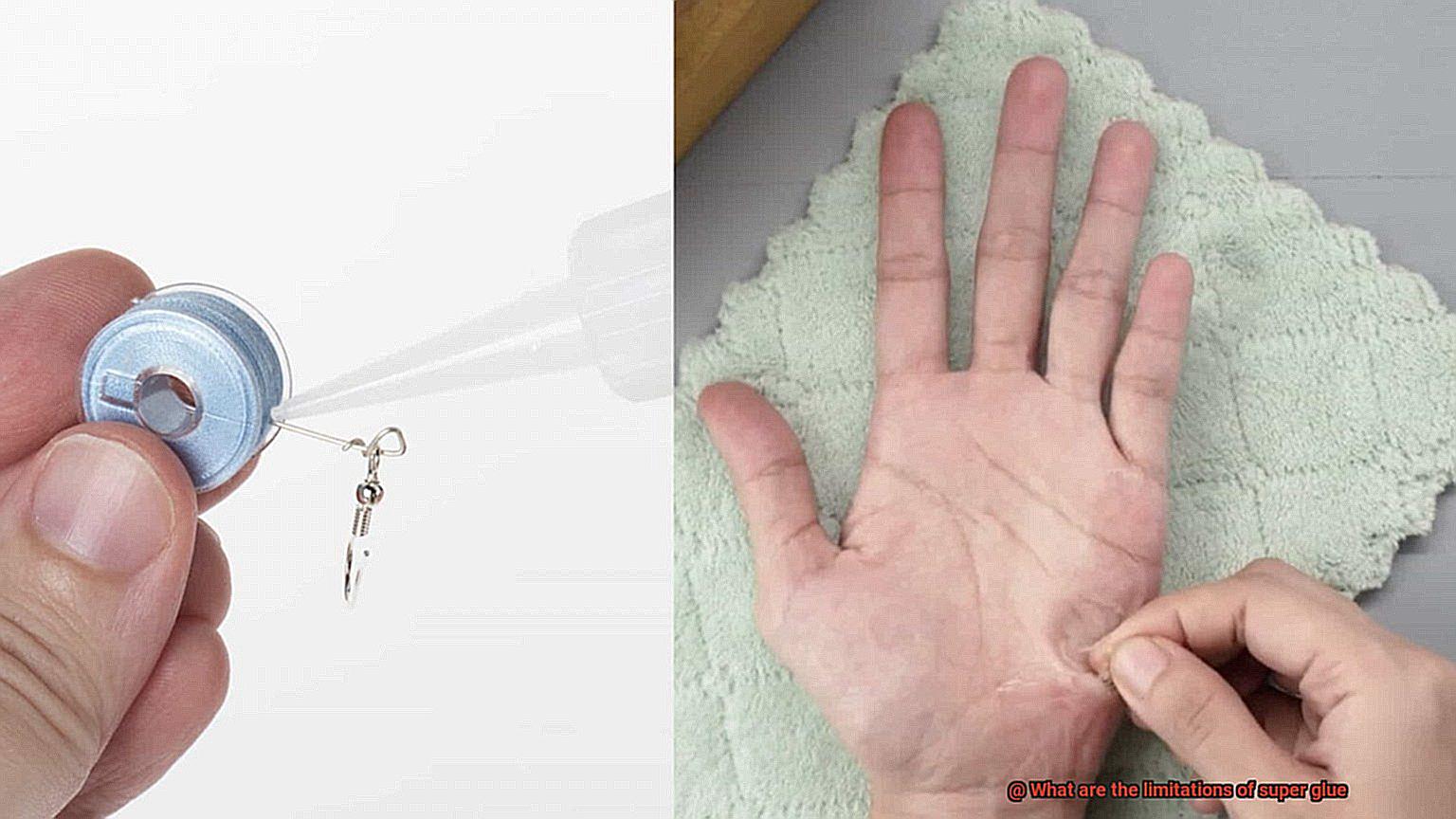
Limitations of Super Glue
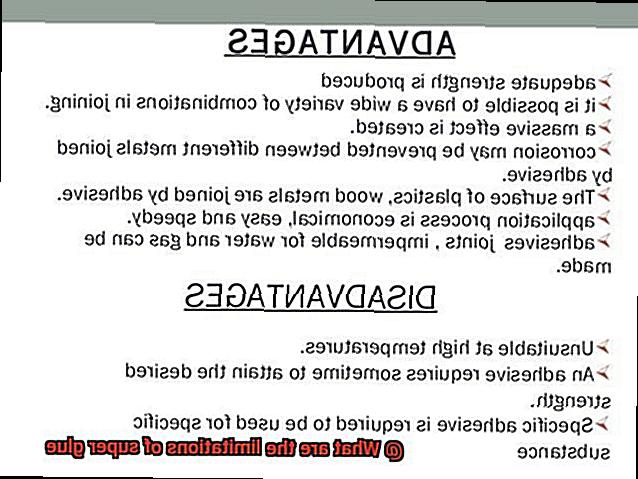
Super glue, the adhesive superhero we all rely on for quick and strong bonding, has its limitations just like any hero. Let’s explore these drawbacks to determine when it might not be the best choice for your projects or repairs.
Bonding with Certain Materials:
Super glue excels in bonding smooth surfaces like metal, glass, and plastic. However, it struggles to grip onto porous materials such as wood, fabric, and paper that have small crevices or irregularities. Before using super glue, consider whether your materials are suitable for its adhesive properties.
Lack of Flexibility:
Once super glue dries and forms a bond, it becomes as hard as Mr. Incredible’s abs. While this rigidity is beneficial in many cases, it can be a limitation when repairs require flexibility or resistance to stress or movement. For projects involving cracked plastic containers that need to bend, super glue may not withstand the pressure.
Temperature and Moisture Sensitivity:
Extreme heat weakens the bond created by super glue, making it unsuitable for applications exposed to high temperatures. Additionally, water or moisture can compromise its adhesive properties. If you need an adhesive that can brave the elements, super glue may not be the ideal choice.
Inability to Fill Gaps or Spaces:
Super glue is designed to form a strong bond between surfaces in close contact with each other. It struggles to penetrate gaps or spaces between materials, limiting its effectiveness in projects where a complete bond is required.
Limited Shelf Life:
Once opened, super glue has a limited shelf life. Over time, even when stored properly, it can dry out and become unusable. If you’re not a frequent user, consider this limitation before purchasing a large bottle.
Not Suitable for All Repairs:
While super glue is versatile for many applications, it may not be suitable for structural repairs or projects that require long-lasting durability. In such cases, specialized adhesives or mechanical fasteners might be the true heroes you need.
Inability to Bond Certain Materials
Super glue, the mighty cyanoacrylate adhesive, is renowned for its exceptional bonding capabilities. However, even this adhesive superhero has its weaknesses. In this article, we will delve into why super glue may not be suitable for bonding certain materials. By exploring its challenges and alternative solutions, we aim to provide a comprehensive understanding of this limitation.
The Battle with Plastic:
Plastic, the formidable arch-nemesis of super glue, presents a significant challenge. Low surface energy and high porosity in plastics like polyethylene (PE) and polypropylene (PP) make them particularly difficult to bond. These materials possess weak attraction properties, leading to less durable bonds. It is undoubtedly a chink in super glue’s armor.
The Slippery Slope of Silicone:
Silicone, with its smooth and slippery surface, proves to be an elusive foe for super glue. The adhesive struggles to adhere to this flexible material that can withstand extreme temperatures. To conquer silicone, it is best to enlist the aid of specialized silicone adhesives or sealants explicitly designed for this material.
Rubber’s Resilience:
Certain rubber materials, such as natural rubber and EPDM, exhibit resistance to super glue’s bonding powers due to their high elasticity and low surface energy. Achieving successful bonding with rubber requires the use of adhesives specifically formulated for this purpose.
Porous Materials: The Achilles’ Heel:

Wood and fabrics present another challenge for our adhesive superhero. Super glue’s thin consistency allows it to seep into the pores of these materials rather than forming a strong surface bond. For effective wood bonding, wood glue or epoxy adhesives are the preferred options. Similarly, fabrics are best bonded using specialized fabric glues or traditional sewing techniques.
Lack of Flexibility Once Cured
Today, we embark on a sticky exploration – uncovering the limitations of the beloved super glue. Yes, it’s quick and mighty, but did you know that its lack of flexibility once cured can put a damper on your projects? Let’s delve into the fascinating world of super glue limitations.
Picture this: you’ve bonded two plastic pieces with super glue, only to discover they need to move or flex. Uh-oh. The rigid nature of super glue crumbles under such stress, leaving you with cracked or broken materials. It simply can’t handle the pressure.
Hold on tight, because there’s more to this story. Repairs and modifications become a nightmare due to super glue’s inflexibility. Separating bonded materials without causing damage requires the precision of a surgeon and the delicacy of a butterfly. Good luck mastering that tricky maneuver.
But wait, there’s another twist. Durability is another concern when it comes to super glue’s rigidity. In environments with temperature fluctuations, humidity, or exposure to chemicals, this adhesive’s inflexibility becomes its Achilles’ heel. It weakens and breaks under these harsh conditions, leaving you hanging by a thread.
Don’t lose hope just yet. There are specialized versions of super glue available that claim to offer more flexibility once cured. These extraordinary variants contain additives or different chemical compositions that allow for some degree of flexibility without compromising strength. However, tracking down these superheroes may prove challenging compared to standard super glue.
So, next time you reach for your trusty tube of super glue, remember its limitation – the lack of flexibility once cured. While it excels at swift fixes and robust bonds, it might not be your go-to choice for applications requiring adaptability and resilience.
Stay firmly glued for more captivating insights into the world of adhesives. Until we meet again, keep sticking together.
Temperature Sensitivity
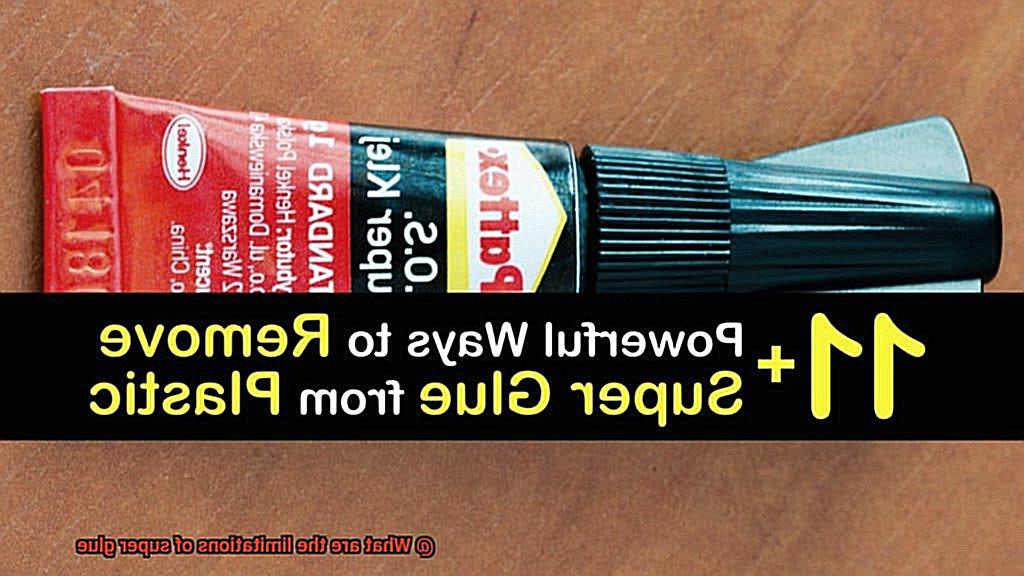
Super glue, the adhesive powerhouse, possesses an unexpected vulnerability – temperature sensitivity. In this comprehensive exploration of temperature sensitivity, we will uncover its profound impact on the performance and durability of super glue. Prepare to be captivated by the intricacies of this phenomenon as we delve deeper into the secrets of temperature sensitivity.
The Impact of High Temperatures:
When the heat intensifies, super glue’s hold weakens. High temperatures render the adhesive brittle, compromising its bonding strength. Picture yourself repairing a broken car part or working in an industrial setting where heat abounds – if the glue cannot endure high temperatures, your repair job could crumble before your eyes. Hence, it is vital to ascertain the heat limitations of super glue when selecting the appropriate adhesive for such applications.
The Chilling Effect of Low Temperatures:
Conversely, frigid temperatures also pose a formidable challenge for super glue. When it becomes too cold, the curing process slows down, prolonging the time required for the glue to fully bond. This setback can be exasperating when time is of the essence or immediate fixes are needed. Fortunately, there are specialized low-temperature formulas available that excel even in icy environments, combating this quandary with ease.
The Battle of Temperature Fluctuations:
Temperature fluctuations present a genuine test for super glue bonds. Consider objects exposed to varying temperatures – they expand and contract at disparate rates, exerting strain on the bond formed by super glue. Over time, this strain weakens the bond and may lead to potential failure. Thus, it is imperative to consider the environment in which you employ super glue and choose an adhesive capable of enduring temperature changes without compromising performance.
Overcoming the Limitations:
To triumph over the limitations imposed by temperature sensitivity, meticulous adhesive selection is paramount. High-temperature applications necessitate heat-resistant variants, while cold environments demand low-temperature formulas. Additionally, adhering to the manufacturer’s instructions regarding temperature limitations ensures the attainment of optimal bond strength.
Moisture Interference
We’ve all experienced the frustration of trying to fix something with super glue, only to have it fail miserably. But have you ever stopped to wonder why? Well, one of the biggest culprits behind super glue’s shortcomings is moisture interference. In this blog post, we’ll explore how moisture can wreak havoc on your bonding projects and discuss ways to overcome this limitation.
The Impact of Humidity:
Imagine this: you’re in a hot and humid environment, trying to glue together two pieces of plastic. As you apply the super glue, little do you know that the moisture in the air is already attacking your bond. High humidity levels introduce excessive moisture that prevents the glue from properly setting and forming a strong bond. The result? A weak or incomplete bond that won’t hold up under pressure.
Porous Materials and Moisture:
But it’s not just humidity that poses a threat. When working with porous materials like wood or fabric, moisture interference becomes even more problematic. These materials have microscopic openings that can trap moisture. When super glue is applied to such surfaces, the trapped moisture dilutes the adhesive, leaving you with a flimsy bond that won’t stand the test of time.
Water: The Ultimate Enemy:
And let’s not forget about water itself. Direct contact with water causes super glue to break down, resulting in a loss of bonding properties. So if you’ve ever wondered why your super glued object fell apart after accidentally getting wet, now you know why.
Overcoming Moisture Interference:
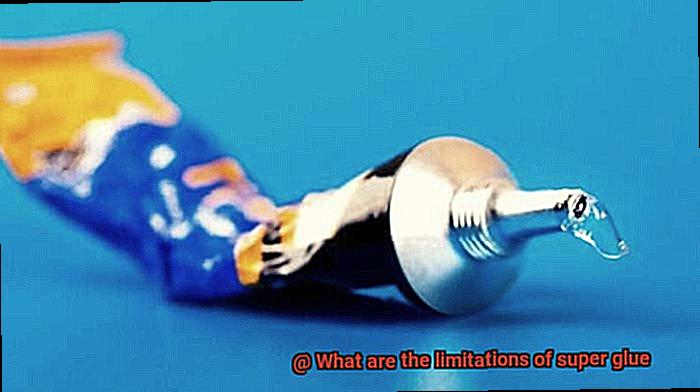
Fortunately, there are steps you can take to minimize the impact of moisture interference. First and foremost, ensure that the surfaces you’re gluing are dry and free from any moisture or contaminants. Clean them thoroughly and give them ample time to dry before applying the adhesive.
In situations where bonding in humid environments is unavoidable, consider using a specialized moisture-resistant super glue. These adhesives are designed to withstand moisture exposure and maintain their bonding properties even in high humidity conditions. While they may not completely eliminate the effects of moisture, they provide a stronger and more reliable bond.
Not Suitable for Heavy Loads or Constant Stress
When it comes to selecting materials for heavy loads or constant stress, it’s crucial to consider their suitability. While some materials may excel in certain applications, they may fall short when subjected to excessive weight or continuous pressure. In this article, we will explore the reasons why certain materials are not suitable for heavy loads or constant stress, delving into their limitations and understanding the science behind their shortcomings.
Material Strength:
One of the primary reasons why certain materials are not suitable for heavy loads is their lack of strength. Some materials, such as lightweight plastics or thin metals, simply do not possess the structural integrity required to bear substantial weight. Their molecular composition and inherent properties make them prone to deformation, bending, or even breaking when faced with excessive force.
Fatigue Resistance:
Constant stress can also pose a challenge for certain materials due to their limited fatigue resistance. Fatigue occurs when a material undergoes repeated cycles of stress and strain over time. Some materials may initially withstand moderate stress but fail under prolonged exposure. This can result in crack propagation, material degradation, or even catastrophic failure.
Elasticity and Durability:
Materials that lack elasticity and durability are also ill-suited for heavy loads or constant stress. Elasticity refers to a material’s ability to deform and return to its original shape after being subjected to external forces.
Materials with low elasticity tend to deform permanently under stress, compromising their structural integrity. Similarly, materials with poor durability may experience wear and tear or undergo premature degradation when subjected to constant stress.
Adhesion Strength:
Another factor to consider is the adhesion strength of the material used in bonding applications. Adhesives or fastening methods that rely on weak bonds may not be capable of withstanding heavy loads over time. The bond between the materials can weaken or fail under constant stress, leading to separation or detachment.
Alternative Adhesives and Professional Advice
Today, we embark on a journey into the realm of alternative adhesives and the invaluable wisdom of seeking professional advice. Buckle up, because we’re about to dive deep into the fascinating world of bonds and glues.
We all adore super glue for its speedy drying and Herculean bonding capabilities. It’s like a superhero in the adhesive universe. But even superheroes have their limits. Super glue may not always be the ideal choice for certain materials, such as delicate glass or fragile ceramics. That’s where alternative adhesives swoop in as the gallant saviors.
One champion among alternatives is epoxy adhesive, renowned for its exceptional bonding strength and remarkable versatility. It fearlessly adheres to an extensive array of materials, including those notorious glass and ceramics. However, heed this cautionary tale: epoxy usually comes in two components that must be skillfully mixed together before application. This sacred fusion ensures a mighty and long-lasting bond.
Another contender is cyanoacrylate glue, better known as “crazy glue” or “instant glue.” This adhesive, akin to super glue, may not possess the same Herculean strength as epoxy. Nevertheless, it performs miraculous feats on various materials and can swiftly rescue you from countless sticky situations.
Now, let us delve into the importance of professional advice. These adhesive experts are akin to wise sages in the realm of glues. With their vast knowledge and experience, they guide you in selecting the perfect adhesive for your unique project. They consider crucial factors like the materials being bonded, the intended purpose of the bond, and even the environmental conditions that may affect adhesion.
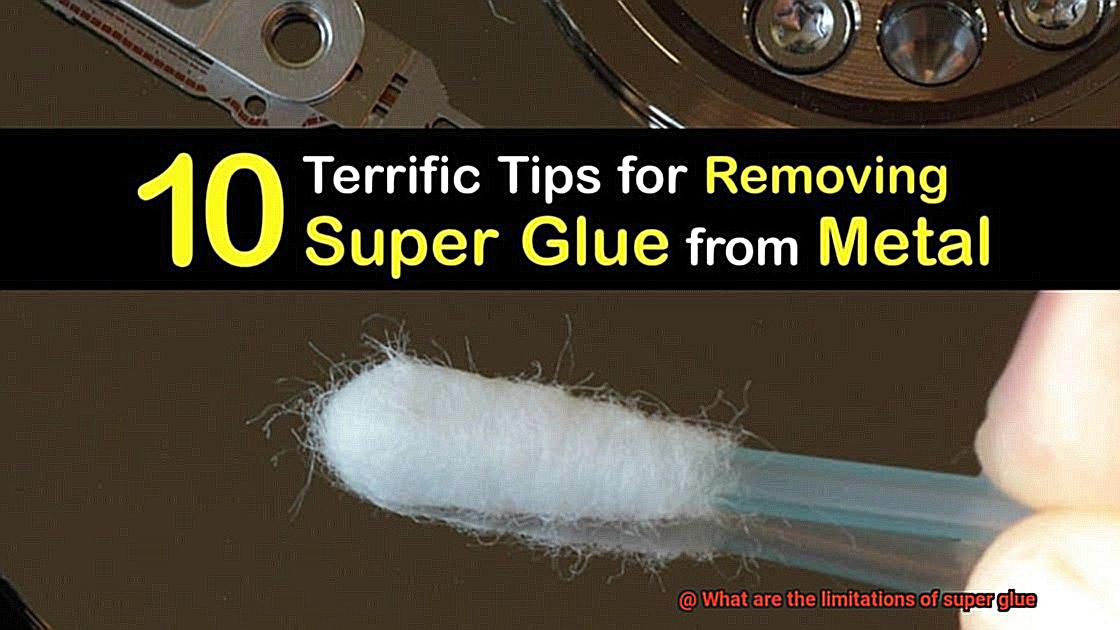
But that’s not all. These professionals don’t just bestow wisdom; they teach you the sacred art of application techniques and safety precautions. They emphasize that adhesive usage must always occur in well-ventilated areas, with protective gear shielding you from potential health risks.
And should any tribulations arise during or after the bonding process, fear not. The adhesive experts shall come to your rescue once again. They possess the uncanny ability to troubleshoot any sticky conundrum and offer alternative solutions or techniques, ensuring victory in the battle of bonds.
So, dear adhesive enthusiasts, remember to seek professional advice when venturing into the realm of alternative adhesives. They shall be your guiding light, selecting the perfect adhesive, imparting invaluable tips, and standing by your side in case of any unforeseen challenges. With a touch of professional guidance, your adhesive endeavors shall flourish.
Cleaning and Preparing Surfaces Before Applying Super Glue
If you’re looking to achieve rock-solid bonding with super glue, you’ve come to the right place. Before diving into the exciting world of sticking things together, it’s crucial to prepare your surfaces properly. In this guide, we’ll walk you through the steps for cleaning and prepping surfaces before applying super glue. Let’s get started.
Step 1: Say Goodbye to Dirt and Debris:
To ensure a strong bond, start by removing any dirt, dust, or debris from the surfaces. Grab a soft cloth or brush and gently wipe away these unwanted particles. A clean canvas is essential for optimal adhesion.
Step 2: Banish Grease, Oil, and Moisture:
Greasy substances or moisture can create barriers that prevent proper bonding. Use a mild detergent or soap solution along with a clean cloth to wipe down the surfaces and eliminate any grease, oil, or moisture. This step guarantees a strong bond between the surfaces and the super glue.
Step 3: Add Some Roughness for Extra Grip:
For an extra strong bond, create a slightly rough texture on the surfaces. Lightly sand them using fine-grit sandpaper or a sanding block. This roughens up the surface, providing more area for the glue to grip onto. The increased surface area enhances adhesion and leads to a stronger bond.
Step 4: Dry ‘Em Out:
Moisture and super glue don’t mix well. After cleaning and sanding, make sure your surfaces are thoroughly dried before applying the adhesive. This ensures optimal bonding conditions and prevents any unwanted interference.
Step 5: Special Attention for Tricky Materials:
Some materials require special treatment when it comes to super glue bonding. Smooth or non-porous surfaces like glass or metal can benefit from using a primer or adhesive promoter. These products enhance adhesion on challenging materials, ensuring a secure bond.
Step 6: Watch Out for Plastic Pitfalls:
Super glue and certain plastics can be like oil and water – they just don’t mix. Polyethylene or polypropylene, for example, are notoriously difficult for super glue to bond with. In such cases, it’s best to explore specialized plastic adhesives or alternative bonding methods that are designed to work with these materials.
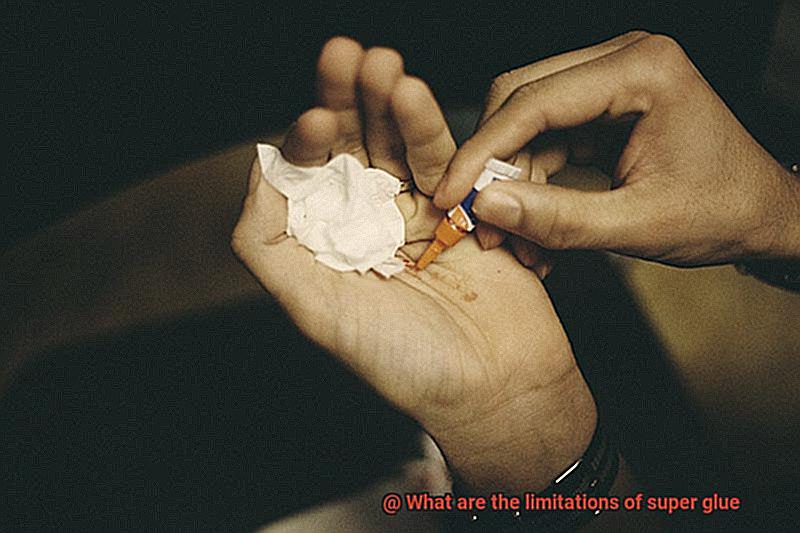
Step 7: Follow the Manufacturer’s Instructions:
Every superhero adhesive has its own set of rules. Always read and follow the instructions provided by the manufacturer of your super glue. They may have specific recommendations for surface preparation and application techniques that will lead you to adhesive success.
Examples of Non-Porous Surfaces That Super Glue Works Best On
Super glue, also known as cyanoacrylate adhesive, is an incredibly versatile tool for various repair and crafting projects. However, it works best on non-porous surfaces, which are smooth surfaces that do not allow liquids or gases to pass through. Let’s explore some examples of non-porous surfaces that super glue excels on.
Firstly, glass is one of the most common non-porous surfaces that super glue bonds exceptionally well to. Whether you need to repair glassware, attach glass beads or decorations, or even create intricate glass art pieces, super glue is your go-to adhesive for glass projects.
Metal surfaces are another excellent choice for using super glue. It can be used to repair metal jewelry, fix broken metal parts, or even craft metal sculptures. The strong bond created by super glue ensures that your metal projects stay intact.
Many types of plastic are also non-porous and can be successfully bonded with super glue. However, it is important to note that not all plastics are compatible with super glue. Some plastics have a low surface energy and may require special adhesives designed for plastic bonding.
Ceramic and porcelain surfaces can benefit from the fast-drying nature of super glue. Whether you need to repair a ceramic vase or a delicate porcelain figurine, super glue can easily mend small cracks or attach broken pieces together.
Certain types of rubber, such as neoprene or nitrile rubber, are non-porous and can be effectively bonded with super glue. It is often used for repairing rubber soles on shoes or fixing small rubber components.
Lastly, non-porous leather surfaces can also be bonded with super glue. It can be handy for mending small tears or attaching leather pieces together. However, it is important to use the glue sparingly and avoid excessive use to prevent leaving a visible residue on certain types of leather.
While super glue works best on non-porous surfaces, it may not be suitable for all applications. It may not provide a strong bond for load-bearing or high-stress situations. In such cases, using specialized adhesives or mechanical fasteners may be more appropriate.
To ensure a strong bond, it is important to prepare your surfaces properly before applying super glue. This includes removing dirt and debris, banishing grease, oil, and moisture, adding roughness for extra grip, and drying the surfaces thoroughly. Following the manufacturer’s instructions is also crucial for achieving the best results.
How to Test the Strength of a Super Glue Bond
Super glue, also known as cyanoacrylate adhesive, is a popular choice for bonding materials due to its quick-drying and strong adhesive properties. However, it is important to understand the limitations and reliability of super glue. In this article, we will explore different methods to test the strength of a super glue bond and discuss factors that can affect its reliability.
Shear Strength Test: The Power of Resistance
To test the strength of a super glue bond, a shear strength test is an effective method. This test measures how well the bond holds up when forces are applied parallel to the surface of the bond. Picture pulling or twisting an object to see if the bond withstands the pressure. By gradually increasing the force until the bond breaks, you can determine its shear strength and witness the power of resistance.
Tensile Strength Test: Withstanding the Forces
Another way to assess super glue bond strength is through a tensile strength test. This test evaluates how well the bond withstands forces applied perpendicular to the bond line. Imagine pulling two bonded materials apart to measure the force required for separation. This test helps determine the adhesive’s ability to resist tension or stretching forces, revealing its capacity to withstand external pressures.
Peel Test: Unveiling Intact Adhesion
A peel test is an essential method to assess how well a super glue bond holds up against forces parallel to the bond line but perpendicular to the surface. Visualize peeling two surfaces apart at an angle to see if the bond remains intact. The force required to separate them indicates the peel strength of the adhesive, revealing its ability to maintain adhesion even under challenging conditions.
Environmental Conditions: A Crucial Factor
It is crucial to consider how environmental conditions can impact the strength of a super glue bond. Extreme temperatures, both hot and cold, can affect its performance. Additionally, moisture or humidity can interfere with the curing process and compromise adhesion. To ensure optimal results, surfaces must be clean and dry before applying super glue. By acknowledging these factors, you can guarantee accurate test results.
Material Compatibility: A Bonding Puzzle
While super glue works best on non-porous surfaces like metal, glass, and plastic, it may not provide a strong bond on porous materials such as wood or fabric. Additionally, the inflexibility of super glue may not be suitable for materials that require flexibility or movement. Before relying solely on super glue, consider the specific requirements of your materials. Solving the material compatibility puzzle is key to achieving a secure and durable bond.
Potential Hazards of Using Super Glue
Using super glue can pose several potential hazards to your health and safety. It is crucial to understand these risks and take the necessary precautions to protect yourself. Here are some important details about the potential hazards of using super glue:
- Eye and Skin Irritation: Super glue can cause severe eye irritation if it accidentally comes into contact with your eyes. The adhesive can irritate the delicate tissues of your eyes and even damage your cornea. Immediate medical attention is necessary if this happens. Skin contact with super glue can also lead to irritation, redness, and allergic reactions. Some individuals may experience itching, swelling, or a rash. Prolonged exposure or repeated contact can result in dermatitis, a condition characterized by dry, itchy, and inflamed skin.
- Respiratory Issues: Inhaling the fumes released by super glue can irritate your respiratory system. This can cause coughing, wheezing, and shortness of breath. People with pre-existing respiratory conditions like asthma may be more susceptible to these effects. To minimize the risk of respiratory issues, it is advisable to use super glue in a well-ventilated area.
- Accidental Ingestion: Accidentally swallowing super glue can lead to serious health complications. The adhesive can stick to the inside of your mouth, throat, and digestive tract, potentially causing blockages or obstructions. This can result in difficulty swallowing, choking, and harm to your internal organs. Keep super glue out of reach of children and pets to prevent accidental ingestion or exposure.
- Allergic Reactions: Some individuals may develop allergic reactions to super glue. Symptoms may include itching, redness, swelling, or a rash at the site of contact. If you experience any allergic symptoms, it is best to discontinue use immediately and consult a healthcare professional.
To protect yourself when using super glue, it is important to wear gloves and protective eyewear. Avoid using it on open wounds or broken skin as it can delay proper healing and increase the risk of infection. Additionally, always use super glue in a well-ventilated area to minimize inhalation of fumes.
Conclusion
Super glue, while incredibly useful in many situations, does have its limitations. It’s important to be aware of these limitations in order to use the adhesive effectively and avoid disappointment.
Firstly, super glue is not suitable for all materials. While it works wonders on plastics and metals, it may not bond as effectively with certain types of wood or fabric. It’s always best to test a small area before applying it to ensure a strong bond.
Another limitation is that super glue does not work well on surfaces that are oily or greasy. The adhesive needs a clean and dry surface to properly bond. So if you’re trying to fix something that has been exposed to oils or grease, you may need to clean it thoroughly before applying the glue.
Furthermore, super glue is not flexible once it dries. This means that if you’re trying to repair something that requires flexibility or movement, such as a shoe sole or a rubber gasket, super glue may not be the best choice. In these cases, it’s better to opt for adhesives specifically designed for flexibility.
Additionally, super glue has a relatively short shelf life once opened. It tends to dry out quickly if not stored properly. To extend its lifespan, make sure to tightly seal the container after each use and store it in a cool and dry place.
Lastly, while super glue creates a strong bond between two surfaces, it is not ideal for applications that require high heat resistance or extreme durability. If you need an adhesive for such purposes, there are specialized options available on the market.
In conclusion, while super glue is a versatile and handy adhesive, it does have its limitations.


